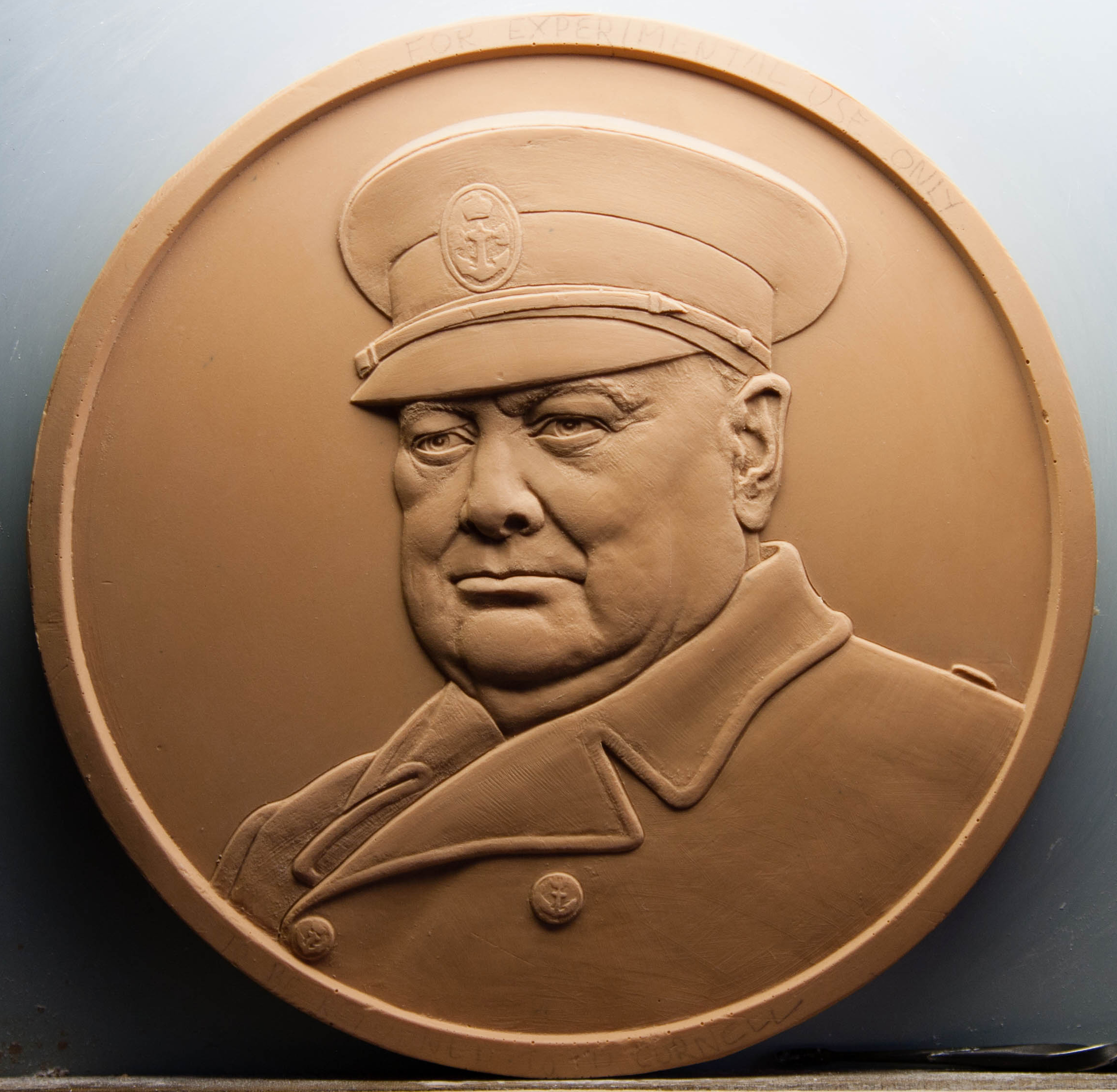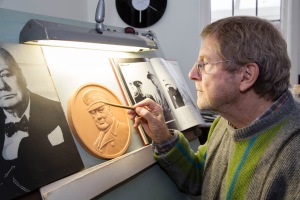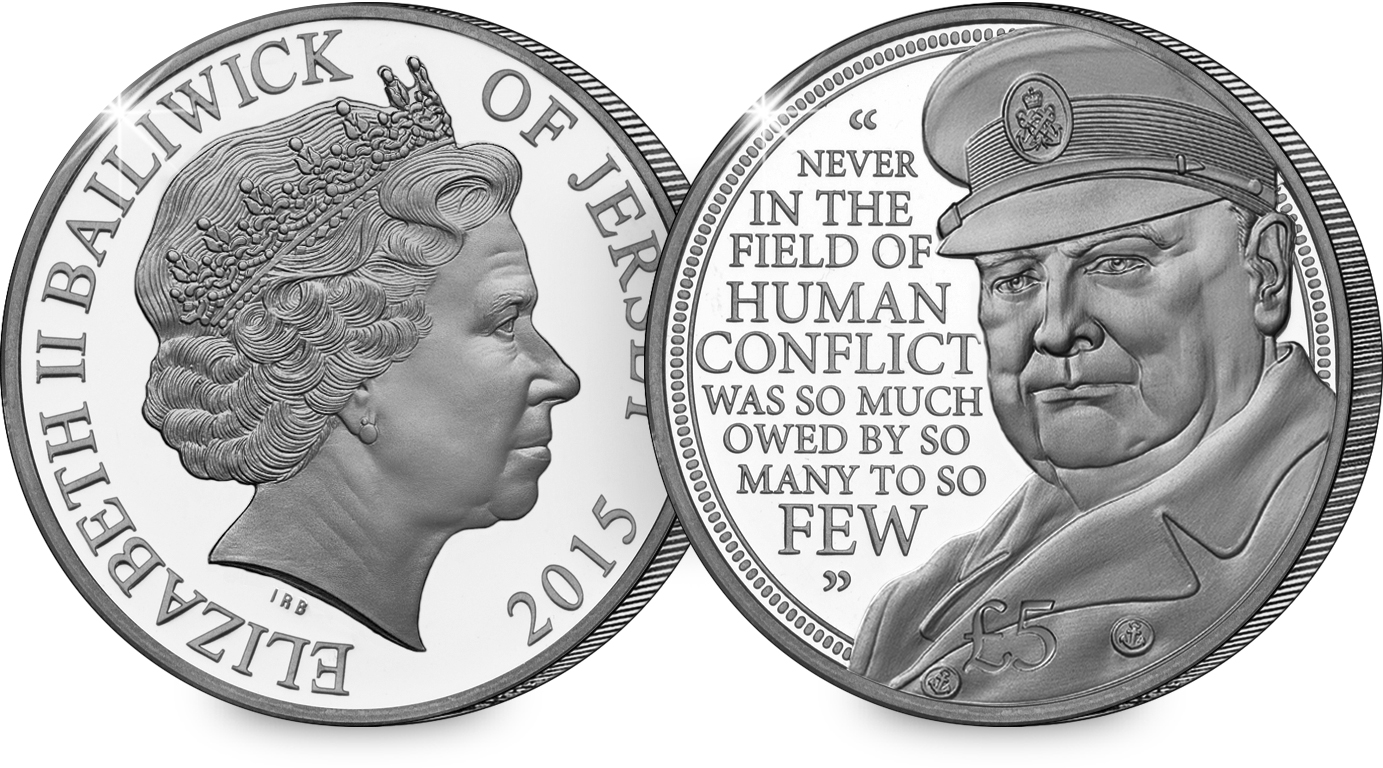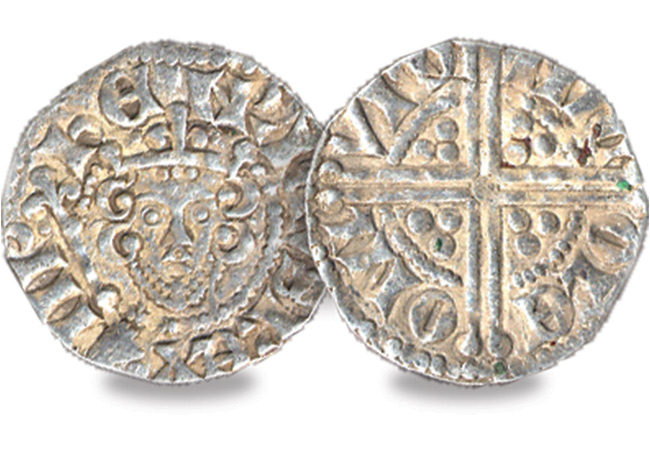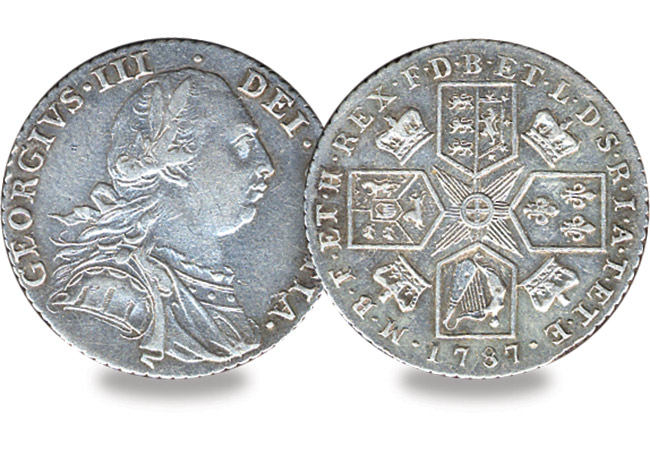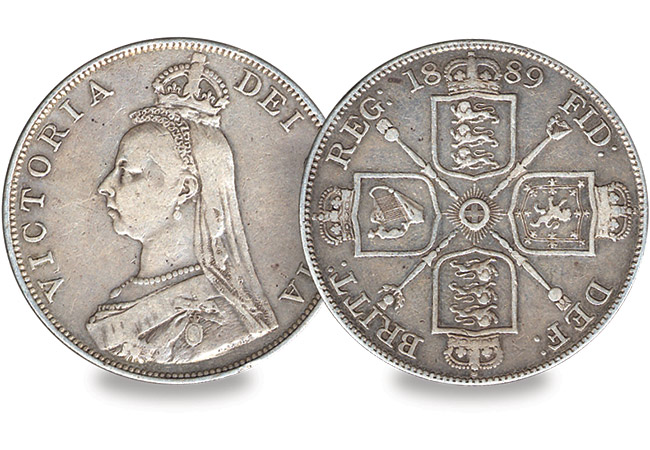Posts Tagged ‘British Coins’
The story behind the Winston Churchill £5 Coin
This year a brand new £5 coin has been issued to commemorate Sir Winston Churchill, and it features a never-seen-before effigy of the great man.
Designed by renowned sculptor and artist David Cornell FRSA, the new portrait shows a defiant Churchill in military uniform.
I’ve been given a behind the scenes look at the creation of the portrait, and had a quick chat with the artist himself.
David Cornell is perhaps more famous for sculpting members of the Royal family, (he was even commissioned to paint a birthday portrait of the Queen) so I thought I’d ask him about his inspiration behind the new design:
“Winston Churchill was a major part of my childhood growing up in London during the War, hearing his speeches and seeing photos on posters, which left an indelible impression on me.
“I realised later what a great man he was and his contribution to the War effort, inspiring the people of Great Britain.
“As a portrait artist, it has been a great honour for me to be able to portray him in this tribute to honour his legacy.”
First of all Cornell worked on a plaster engraving of the portrait, making sure it fits the very particular dimensions of a coin. You can see the fine detail in the picture above, and also the large size of the plaster, which has to be reduced when the die is created to strike the coin.
The finished £5 coin also features an inscription of one of Churchill’s famous speeches: ‘Never in the field of human conflict was so much owed by so many to so few.’ Although spoken in reference to the heroes of the Battle of Britain, the quotation was chosen as it represents Churchill’s indomitable spirit during the war.
The coin has been issued on behalf of the Bailiwick of Jersey, and is available now in a range of metals – from an impressive 5oz 22 carat gold version measuring 2 1/2 inches in diameter, to a highly collectable cupro-nickel version available to all. I’m sure you’ll agree, it will make a fitting tribute in any collection to our greatest ever Prime Minister.
If you are interested…
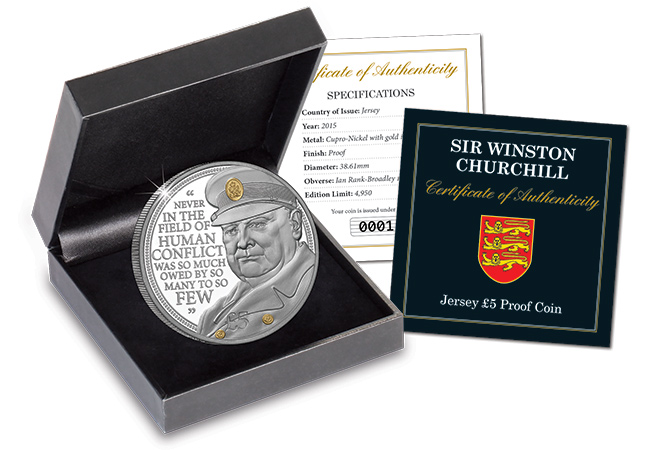
The new Winston Churchill £5 Coin is available now in a special limited edition Proof version. Complete with Presentation Case and Certificate of Authenticity.
As we bid farewell to a familiar face…
The Royal Mint have announced that on 2nd March, the effigy of Her Majesty the Queen on UK coinage will be replaced with a brand new fifth portrait. While we wait for the new portrait to be revealed, here’s a little more detail about the history of the current portrait that has featured on our coinage for the past 17 years…
In 1997 the Royal Mint held a competition to design the obverse of the Golden Wedding Crown. The standard of entries for the joint portrait of Queen Elizabeth II and Prince Philip was so high that it was decided it was time to explore the possibility of replacing the existing portrait by Raphael Maklouf. The winning portrait was designed by Ian Rank-Broadley FRBS and introduced in 1998.
Designed to fill the full circle of the coin, its larger size was a deli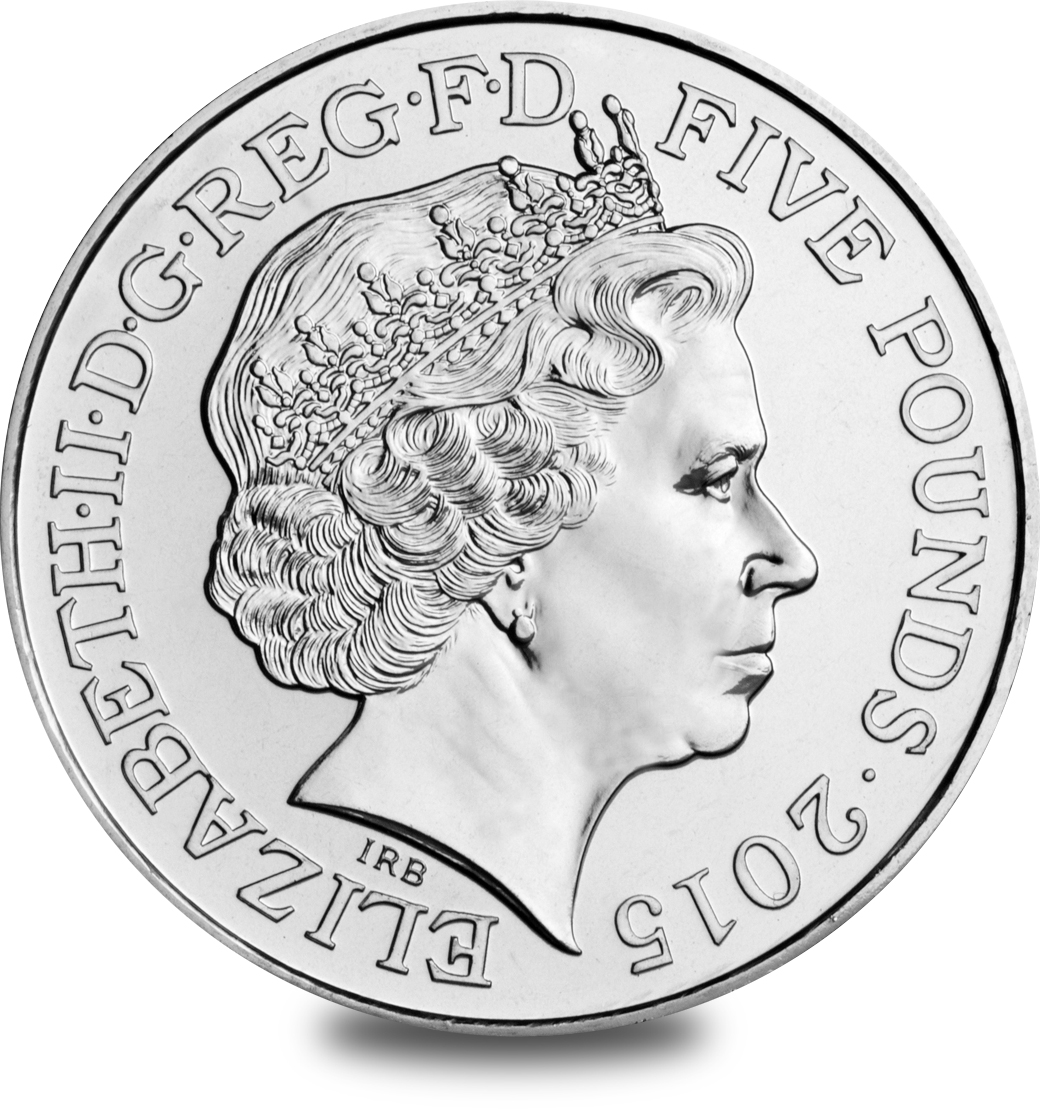 berate response to the smaller coins that had been introduced into circulation. Compared to its predecessor, the portrait is noticeably more mature. Ian Rank-Broadley FRBS felt that there was ‘no need to disguise the matureness of the Queen’s years. There is no need to flatter her. She is a 70-year-old woman with poise and bearing’.
berate response to the smaller coins that had been introduced into circulation. Compared to its predecessor, the portrait is noticeably more mature. Ian Rank-Broadley FRBS felt that there was ‘no need to disguise the matureness of the Queen’s years. There is no need to flatter her. She is a 70-year-old woman with poise and bearing’.
Since then he has designed the 2000 Queen Mother Centennial Crown, 2002 Golden Jubilee Crown, and the conjoined portrait of Queen Elizabeth II and Prince Philip on the 2007 Crown. His effigy of Her Majesty has been used on all circulating British coins since 1998.
Secure the last set of UK coins to feature the current portrait of the Queen
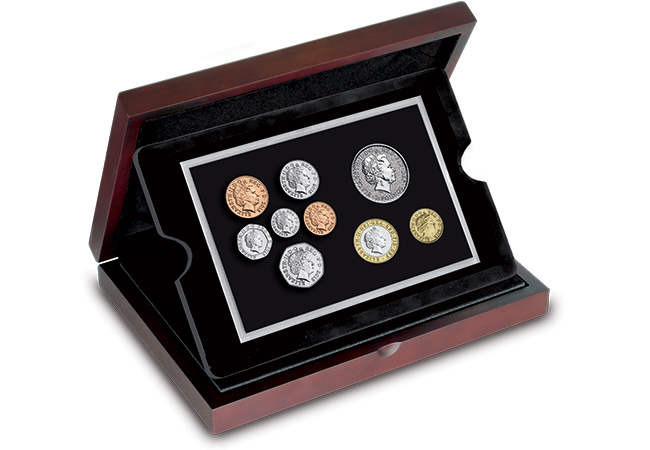 Struck by the Royal Mint to a superior Brilliant Uncirculated finish, the set features the eight 2015 UK definitive coins from the 1p to the £2, brought together with the flagship 2015 1oz pure Silver Britannia coin. Just 495 complete Queen’s Fourth Portrait Specimen Sets have been released.
Struck by the Royal Mint to a superior Brilliant Uncirculated finish, the set features the eight 2015 UK definitive coins from the 1p to the £2, brought together with the flagship 2015 1oz pure Silver Britannia coin. Just 495 complete Queen’s Fourth Portrait Specimen Sets have been released.
Presented in a luxury wooden Presentation Case and complete with its Certificate of Authenticity, this really is the ultimate way to bid farewell to a familiar face.
NOW SOLD OUT
Top 5 – Britain’s Most Infamous Coins
British coinage has had its fair share of controversy over the years, but there are 5 coins that really stand out – each with a fascinating story behind them…
1. 1247–1272 Henry III Long Cross Penny
The Clipped Coin
The practice of ‘clipping’ gold or silver coins has long proved irresistible for a few enterprising individuals who want to get more than they deserve for their money. The practice was most prevalent on hammered coins, with their already irregular shape masking the intended deception. A fraudster would clip or shave off a tiny section of a coin, then attempt to pass off the tampered coinage as original.
Over the months, the tiny clippings of gold and silver could well amount to a decent sum, whilst leaving the exchequer out of pocket. Successive monarchs and governments tried to stem the practice, with varying success – the harshest punishment being the death penalty. The Henry III ‘Long Cross’ Silver Penny is one of the most innovative examples of fraud prevention – the traditional short cross design on the reverse of the coin was extended to reach the edge of the coin – immediately making it obvious when a coin had been clipped.
2. 1729–1754 George II Halfpenny
The Hangman’s Wages
How much was a hangman paid? Well, back when Tyburn was one of the most notorious locations in Britain it was 13½d. Situated at the end of what is now Oxford Street near Marble Arch in London, Tyburn was for centuries the home of capital punishment in England. The ‘Tyburn Tree’ – a triangular gallows – was used for executions right up until 1783.
Various sources suggest the Hangman’s fee for an execution was 13 pence, however the actual amount that changed hands was 13½d – the extra halfpenny was for the rope. Two of the most notable executions conducted at Tyburn were James ‘The Gentleman Highwayman’ MacLaine and Oliver Cromwell, whose dead body was exhumed and hanged again as an act of revenge by the Cavalier Parliament.
3. 1787 George III Shilling
The King’s Shilling
It is the stuff of legend that Royal Navy press gangs would try any means to get potential recruits to ‘take the King’s Shilling’ – the signing up bounty for new sailors.
Acceptance of the shilling was deemed to be a commitment to recruitment in the King’s service, and as the dreadful food, harsh labour and risk of death did not appeal to many the coin was often surreptitiously dropped in a ‘free’ pint and handed over, which led to the creation of glass-bottomed tankards.
4. 1849 Queen Victoria Florin
The Godless Florin
For hundreds of years, right up until the present day, Britain’s coinage has been diligently pious – except for one notorious occasion. Each coin features a range of different Latin inscriptions, but all coinage features the full text or an abbreviation of Dei Gratia, Fidei Defensor – ‘by the Grace of God, Defender of the Faith’ – reference to the Monarch’s position as head of the Church of England.
However, in 1849 a new silver coin – the Florin – was introduced and this inscription was left off, with just Victoria Regina 1849 on the obverse. Despite the exceptional design of the coin, there was an immediate outcry from the strongly religious Victorians and the coin gained the nickname ‘the Godless florin’. It was even suggested that an outbreak of Cholera that year was the act of a vengeful God, visiting death upon the British population as revenge for leaving Him off the new coin. Suffice to say, after Queen Victoria herself complained, the coin was replaced, and remains to this day one of the most infamous one-year-only coin designs in British numismatic history.
5. The Barmaid’s Ruin
1887–1890 Queen Victoria Double Florin
Introduced in 1887, the year of Queen Victoria’s Golden Jubilee, the double florin was for many an unwanted addition to British currency. The real reason for its introduction is disputed, nevertheless it became Britain’s second ‘decimal’ coin, just 2mm smaller in diameter than the familiar Crown yet worth a shilling less.
The unintended consequence was that a significant number of unscrupulous rogues tried to pass the coin off as a Crown, with naïve barmaids apparently the most susceptible to the deception. Anecdotal evidence suggests more than a few barmaids lost their livelihood on the grounds that they were losing the tavern owners money, hence the nickname Barmaid’s Ruin.
 Want to secure all five infamous coins today?
Want to secure all five infamous coins today?
The Westminster Collection have a limited number of complete sets available.
NOW SOLD OUT

